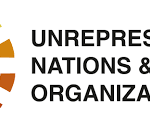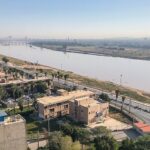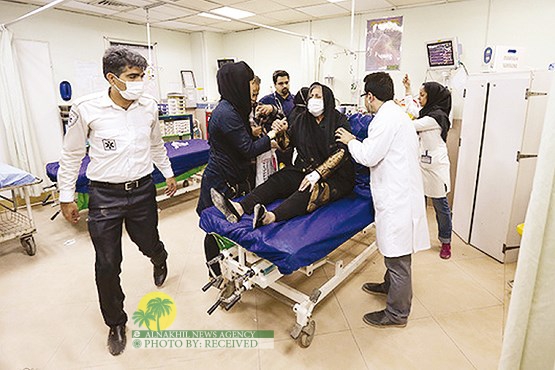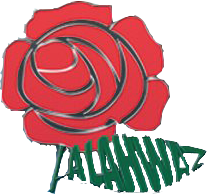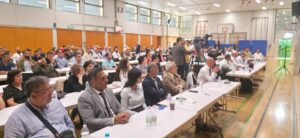Part 2 Ahwaz, a Land Held Captive — A Nation Buried Beneath Occupation
In this series, we highlight the systematic erosion of rights endured by both the people and the land of Ahwaz. In the first article, we examined how the establishment of major oil factories in the region has done nothing to improve the lives of the indigenous Ahwazi Arab population. Instead, these communities continue to face marginalization, environmental destruction, poverty, and severe health crises, as the state prioritizes economic interests and oil profits over their well-being.
In this second part, we shift our focus to the escalating health crisis in Ahwaz—one born of unregulated industrial activity and the alarming proximity of oil infrastructure to residential areas. The consequences—ranging from toxic emissions and severe air pollution to ecosystem collapse and rising illness rates—have been largely ignored by authorities. What follows is an in-depth analysis of how these industrial practices have turned Ahwaz into a landscape of abandonment and sacrifice, where both people and nature are subjected to systemic neglect.
To fully grasp the crisis in Ahwaz, it is essential to consider the concept of necropolitics, introduced by political theorist Achille Mbembe. Necropolitics describes a system in which state power determines who may live and who must die. In Ahwaz, this logic is unmistakably present. Industrial activities—particularly in the oil and petrochemical sectors—are pursued with complete disregard for the welfare of the indigenous population. The state’s policies reflect a cold calculus: maximize revenue while allowing environmental and health hazards to erode the lives of those dwelling on the margins.
This necro-industrial model has transformed Ahwaz into what scholars call a sacrifice zone—a region where marginalized communities bear disproportionate environmental harm in the pursuit of national economic gain. The Ahwazi Arab people are treated as expendable, viewed as collateral damage in the Iranian regime’s relentless exploitation of natural resources. The result is not only economic stagnation but also widespread displacement, chronic illness, and ecological collapse.
Nowhere is this injustice more visible than in the unchecked expansion of oil infrastructure near residential neighborhoods. Desalting and processing plants—essential to oil production—have been constructed alarmingly close to homes, sometimes just 20 meters away. These facilities emit toxic fumes and
particulates, including sulfuric acid and airborne salt, contaminating both the air and the soil.
Saltwater storage tanks, designed to contain corrosive waste, frequently leak, releasing harmful substances into nearby communities. Over time, layers of salt deposited on the ground undergo repeated cycles of evaporation and moisture absorption, releasing fine salt particles into the air. The destruction of local vegetation—which once served as a natural buffer—has only accelerated the spread of these toxins.
The impact on local biodiversity has been devastating. The seasonal arrival of migratory birds—a long-cherished feature of life in the region—has all but disappeared, a stark indicator of ecological deterioration. Residents report an alarming rise in respiratory illnesses, skin conditions, and other pollution-related health issues. In many parts of Ahwaz, simply breathing has become a daily struggle.
Environmental watchdogs have documented that just one oil desalting company burns approximately 15 million cubic meters of sour gas annually, producing an estimated 9 million tons of CO₂ and 3 million tons of hydrogen sulfide. These emissions are not just abstract figures—they represent the ongoing poisoning of air, soil, and water, and the gradual degradation of public health.
The consequences of this toxic industrial landscape extend beyond environmental damage—they manifest most tragically in the lives that are being uprooted. With waste storage sites and gas flaring fields situated dangerously close to residential areas, many Ahwazi Arab families have been left with no option but to abandon their homes. In seeking refuge elsewhere, they encounter joblessness, the collapse of community structures, and a deepening sense of loss and disempowerment.
The state’s response has been defined largely by indifference. There is no investment in public health infrastructure, environmental monitoring, or compensation for affected communities. Meanwhile, the wealth extracted from Ahwaz continues to benefit central authorities in Tehran, while those who pay the human cost remain invisible and unheard.
The crisis in Ahwaz is not a natural disaster—it is the result of deliberate policy decisions rooted in political marginalization and economic exploitation. By prioritizing profits over people and treating environmental safety as expendable, the state has
institutionalized a system of environmental apartheid. The Ahwazi Arab population continues to endure structural violence: their land is poisoned, their air made unbreathable, and their futures foreclosed.
The situation in Ahwaz is a stark example of how extractive economies, when left unchecked, can give rise to systems of environmental and human degradation. The suffering of the Ahwazi Arab people is not incidental—it is the direct outcome of policies that devalue certain lives in the name of national progress. Addressing this crisis requires more than humanitarian gestures; it calls for systemic reform, environmental justice, and the recognition of the Ahwazi people’s right to health, dignity, and self-determination in their own homeland.
Mayasa 01.06.2025
Reference
AStudies. (2025, April 16). Toxic territories: The reality of sacrifice zones for Ahwazi Arabs. Dialogue Institute for Research and Studies. https://astudies.org/2025/04/toxic-territories-the-reality-of-sacrifice-zones-for-ahwazi- arabs/


